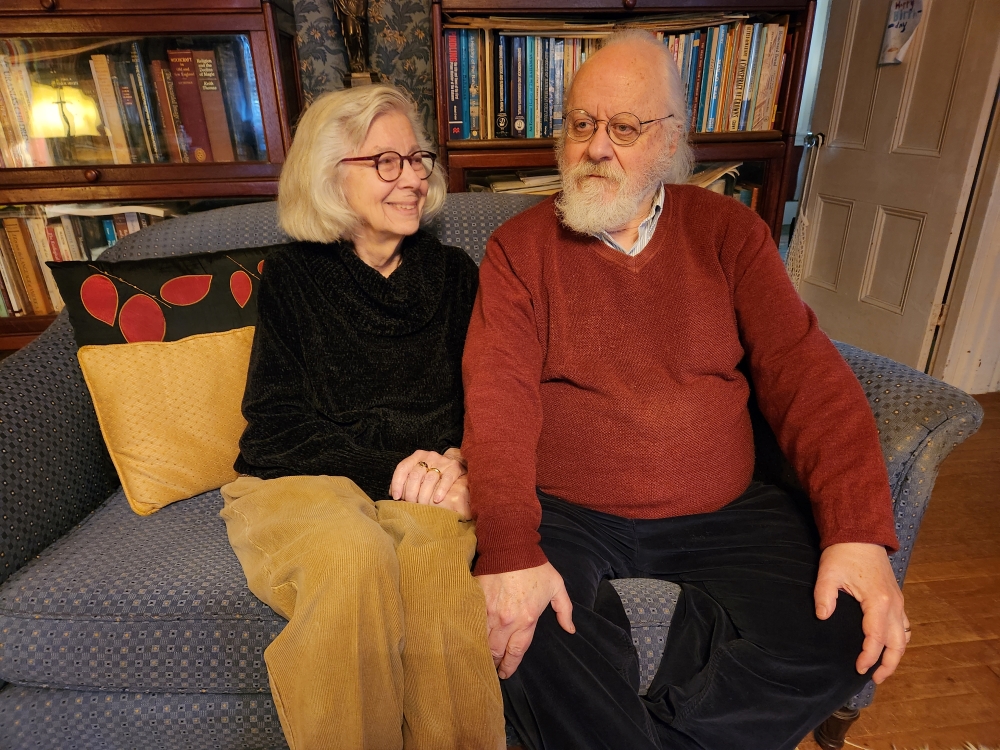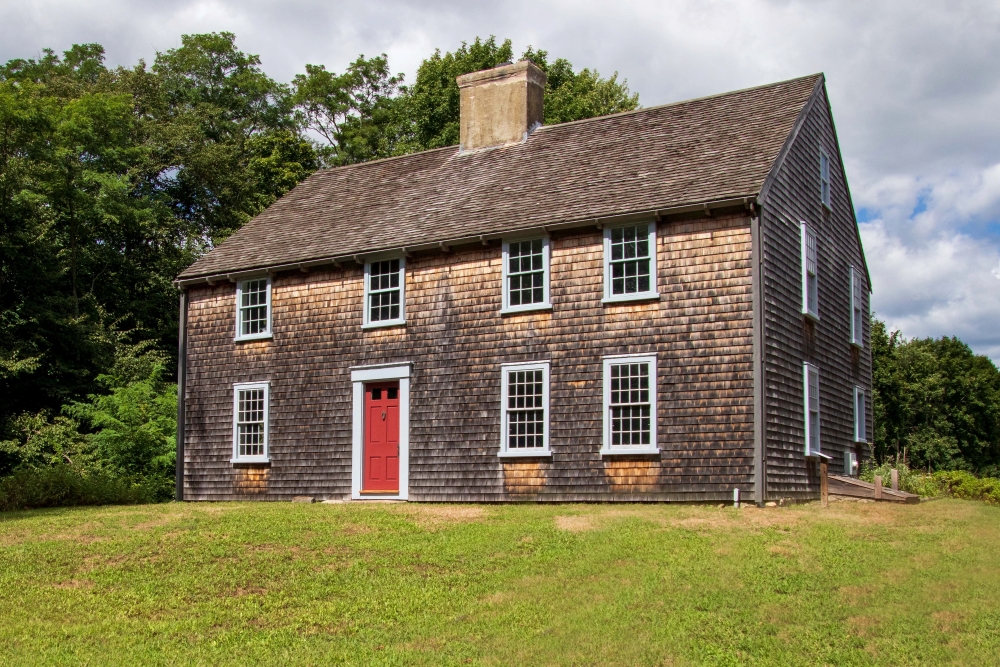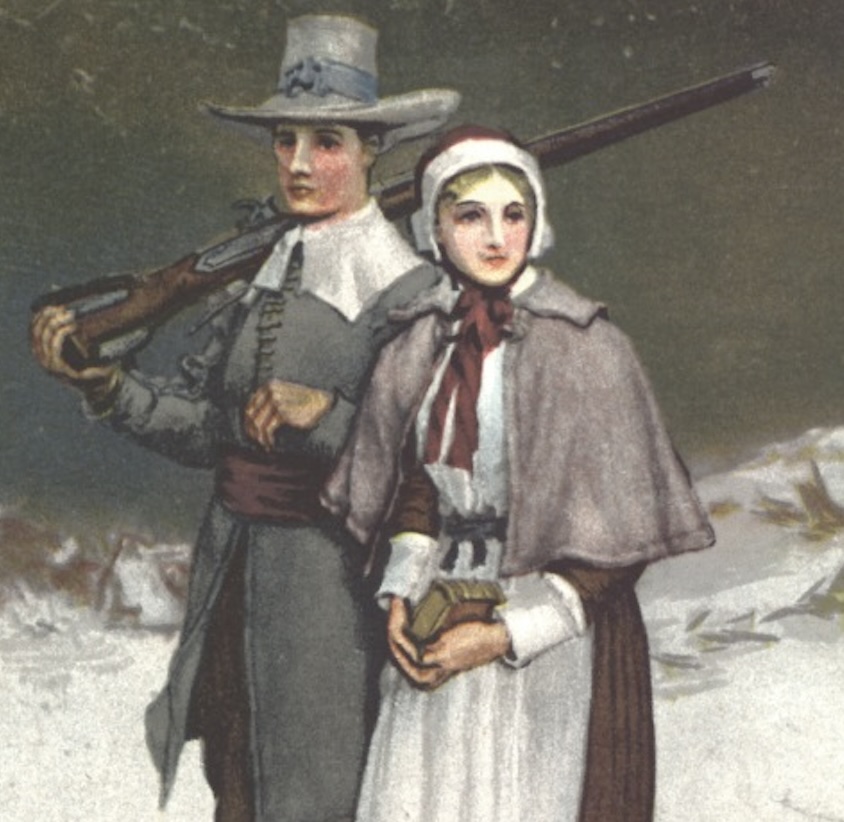Samson and Delilah. Antony and Cleopatra. Romeo and Juliet. John and Priscilla.
History is filled with love stories. They feed our fantasies of romance and remind us why remembering Valentine’s Day should be taken to heart.
Though largely legendary, some of these accounts of affection are based on fact. Even Shakespeare’s star-crossed lovers are believed to have been modeled after real people.
Such is the case with Plymouth’s own passion play: the amorous affair between John Alden and Priscilla Mullins. The pair of Pilgrims had a romance prior to their marriage, possibly in 1622, and it may have even included a tantalizing three-way tryst with Capt. Myles Standish, the military leader of the early Plymouth Colony.

“There probably is a truth there – not in the details, but in the nature of their relationship,” says historian Peggy Baker, the retired director of Pilgrim Hall Museum, which is marking its 200th anniversary this year. “When you look at the actual realities on the ground, something likely happened.”
Alden descendants have long claimed there was a love triangle of sorts. Family tradition holds that Alden went to Mullins on Standish’s behalf, only to find the young woman was interested in him – not the captain.

One descendant who heard that oft-told tale as a child is Pauline Kezer. The Connecticut resident was raised in Waltham but summered in Duxbury near the original Alden homestead, which John and Priscilla began farming around 1628. Kezer, who is president of the board of directors for the Alden Kindred of America, was steeped in family lore about how the couple met and eventually married.
“My mother said, ‘I want a place in Duxbury because I want my family to grow up knowing that they are related to the Aldens,’” she says. “I remember visiting the Alden House as a child. There’s even a photo of me at age 3 on the lawn in front of the house.”
According to Kezer, the story was spread from generation to generation – possibly originating with John and Priscilla themselves. How much of it is fact versus fantasy is open to debate, but there is little doubt that the family passed down this lore for a long, long time.
In 1814, the Alden-Mullins romance became public knowledge through the efforts of descendant Rev. Timothy Alden. In his book “A Collection of American Epitaphs and Inscriptions,” he recounted how that absorbing affaire d’amour was “carefully handed down by tradition.”
In the reverend’s retelling, Alden – “a man of most excellent form with a fair and ruddy complexion” was sent by Standish – “the old gentleman” – on the marital errand. After listening to the proposition, Mullins fixed “her eyes upon him” and asked, “Prithee, John, why do you not speak for yourself?” A blushing Alden then took his leave, but not before indicating that the attraction was mutual.
“Rev. Timothy Alden grew up on Cape Cod in Yarmouth,” says Desiree Mobed, executive director of the Alden Kindred of America. “He was born not quite a hundred years after John and Priscilla Alden died.”
The good reverend, who went on to found Alleghany College in Pennsylvania, does get a few details wrong in his recollection of the family lore. First, he wrote how Alden sought permission from Mullins’ father before delivering the proposal. In reality, William Mullins perished before the incident in question took place.
Also, in describing Standish, Timothy Alden obfuscates the truth about “the old gentleman.”
“Standish is made out to be this old, grizzled guy,” Baker says. “He wasn’t that old; he was maybe at the most 30. We’re not talking about an ancient guy here. Standish is still in the eligible stage of his life.”
The historical record supports the possibility that hearts were aflame with passion some 400 years ago in other ways. In the early days of the Plymouth Colony, Alden did lodge with Standish, whose wife was one of the nearly 50 Pilgrims to die soon after Plymouth was established in December 1620.
In addition, Priscilla was one of the few eligible women in the settlement. Young and desirable, she had been left with the family’s wealth when orphaned by the deaths of her father, stepmother and brother from the illness that swept through the colony in early 1621.
“On board the Mayflower, out of those 102 passengers, there were five teenage girls,” Baker says. “Three of them are young teenagers, who you wouldn’t seriously court, and another who was an unnamed servant. So basically, you’ve got Priscilla, who was 17 or 18, and you’ve got a number of unmarried men floating around. There were at least eight bachelors who survived that first winter and several young-age widowers. Priscilla’s got to pick; she has a choice to make.”
The three-way love affair reached mythical proportions because of a rather lengthy poem by Henry Wadsworth Longfellow. Published in 1858, “The Courtship of Miles Standish” described the romance in much the same way a historical novel or a highly fictionalized Hollywood drama might do so today.
“The details are pure Victorian because Longfellow was writing for a Victorian audience,” Baker says. “He wanted a story that would be linked to them. He writes of Priscilla riding to her wedding on a white bull. Well, we know there wasn’t one in the colony.”
Famously, in the 1,000-line-plus poem, “the loveliest maiden of Plymouth” coyly asks the “fair-haired, azure-eyed” messenger, “Why don’t you speak for yourself, John?”
Published as a book, the poem was hugely successful, selling more than 25,000 copies in just two months. When released in London, it reportedly sold 10,000 copies in one day.

“It certainly was a bestseller for him,” Mobed says. “Longfellow was an Alden descendant, so he could have heard about it or read Timothy Alden’s book.” She adds, “[The poem] was all about telling a story. It’s historical fiction.”
For better or worse, “The Courtship of Miles Standish” helped to entrench the Pilgrim legend into American culture. The poem become a standard part of school curriculums with students often memorizing lines for recitation before classmates. The idealistic – if unrealistic – notions perpetrated in that poetic meter helped establish a mythos for the country’s foundation that persists today.
At its heart, the romance between John Alden and Priscilla Mullins remains a classic tale of desire and passion – where “boy meets girl, boy loves girl and boy marries girl.” Except in this case, it’s really “girl marries boy.”
“This is fantasy in my mind,” Baker says. “But I imagine John and Priscilla with their 10 kids and she teasing them about the fact that it was mama who chose him. That’s how stories get passed down. It strikes that kind of an emotional truth, even if the details of Longfellow’s poem are pretty wonky.”
Dave Kindy, a self-described history geek, is a longtime Plymouth resident who writes for the Washington Post, Boston Globe, National Geographic, Smithsonian and other publications. He can be reached at davidkindy1832@gmail.com.

